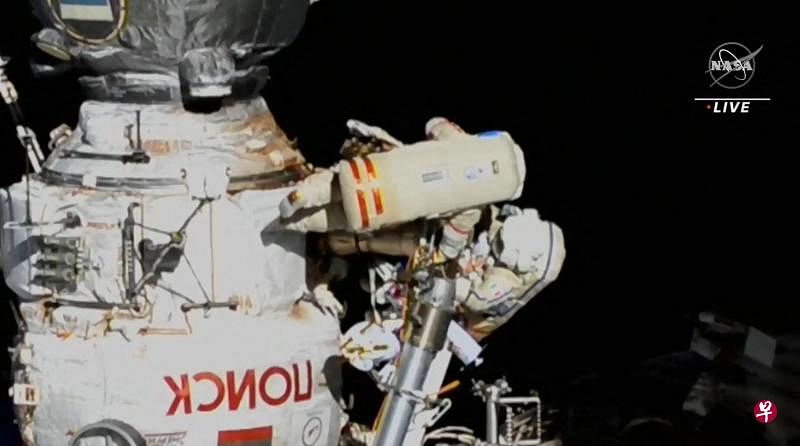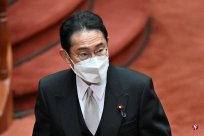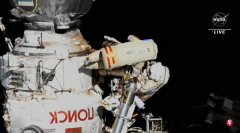
International
Special
Russia announced at the end of July that it will withdraw from the International Space Station project after 2024 to set up its own rail space station.This is not the first time Russia has threatened to withdraw from this project that cooperates with the United States and other countries, but as the Russian and Ukraine War changed geopolitics,
Russia and the United States are afraid that it will be a matter of time.It's just that the relationship between cooperation is not good for the United States and Russia,
International Space Station may retire early in this game, causing a gap in space scientific research.
International Space Station
● Resident area 388 cubic meters
● Quality 419.7 tons
● Average height of 400 kilometers
● Eight space vessels can be connected
On July 26, Yuri Borisov, the new president of Roscosmos, reported to President Putin that Russia will withdraw from the International Space Station project after 2024, and will start the Russian rail service at that time.stand.
Putin said "good" in the performance of this live TV.
After the invasion of Ukraine on February 24th, the tensions between Washington and Moscow have intensified. Many Russian space project officials, including Borisov's former Dmitry Rogozin, have claimed that the Russian plan has been claimed in the past few months.Exit the International Space Station, but they just quit or have the final decision to be ambiguous.
Borisov's announcement has attracted attention, but the National Aeronautics and Space Agency (NASA, also known as NASA) and the White House stated that they did not receive formal notice from Russia.According to the agreement, Russia must notify one year before exiting.
Microsoft boom technology is far from the existing Russian promotion system in the space station
In addition, the website of the Russian National Aerospace Corporation issued an interview with Vladimir Solovyov, the head of the Russian cabin section of the International Space Station on July 27.Solovyev said that the construction of Russian rail service stations will not be completed as early as 2028. Prior to that, Russia will continue to use the International Space Station.
The Russian speech seems to be contradictory. The interpretation of the analyst is that Borisov said "after 2024" instead of "at the end of 2024".Year.
The current multi -national cooperation agreement at the International Space Station expires in 2024.In December 2021, the White House stated that it would extend the cooperation agreement to the end of 2030, but Russia has not agreed.If Russia withdraws by 2030, the United States must figure out how to keep the International Space Station continued to work normally without the help of this long -term partner.Although this is not impossible, it is difficult.
The International Space Station consists of two parts, led by the United States and Russia.The connection between the two and the technical dependence on each other means that the exit of any party and Russia in advance will inevitably affect the overall operation of the space station.
For example, the necessary power and solar energy of the space station are provided by the United States; Russia is responsible for the promotion control system of the space station.Promoting the control system to provide regular boost, so that the international space station will maintain upright and will not be separated from the track.Once Russia withdrew early, other partners of the United States and space stations -Europe, Japan, and Canada -have to find ways to take over Russia's promotion control systems, or design other methods to provide thrust for space stations.In June, the privately developed "Cygnus" spacecraft in the United States made the first boost on the space station, indicating that there may be a substitution path, but the boost performance of the Swan seat number is far less than the existing promotion system of the space station.
NASA has invested hundreds of millions of dollars to encourage the construction of commercial space stations
Without Russia, the operation of the International Space Station will definitely face problems, but NASA cannot easily abandon this facility.In addition to being the key to exploring the space programs in the United States, it is also a test table for diplomatic tools, science laboratories, and future commercial construction space stations, and is currently the only destination of American astronauts in space.
Without the International Space Station, American astronauts will have nowhere to go.Although the NASA plans to return to the moon, its human moon landing plan will not be realized in 2025.
International Space Station is also crucial to the development of the commercial space industry.NASA has invested billions of dollars to the Space Exploration Technology Corporation (SpaceX) and Boeing to develop spacecraft that can transport goods and astronauts to space stations.NASA will not want to see its investment in the east.
Of course, NASA knows that the International Space Station is aging and it is impossible to run on the track forever.It has invested hundreds of millions of dollars in companies that intend to build a commercial space station to replace the international space station, and will invest more.
Russia intends to build rail service stations after 2024 but lacks funds
But these platforms have been invested in operation for many years. Many people are concerned that the international space station retires before the business platform is ready, which will lead to research on the NASA without rail laboratory, especially about zero gravity and radiation.Research on long -term health influence.
Borisov, President of the Russian National Space Corporation, said that after the withdrawal from the International Space Station after 2024, Russia will begin to set up its own rail service station.This is a plan for Russia for many years, but it has not been able to achieve it due to lack of funds.
After all the ASEAN spacecraft retired in 2011, NASA had to pay to Russia and let the American Astronauts take the Russian space ship to the International Space Station.This provides Russia with a steady stream of income.However, two years ago, after SpaceX began to provide transportation for American astronauts, the income was interrupted.As economic sanctions prevented companies in Europe and other countries launch satellites on Russia, Russia also lost additional sources of income.
Even if Russia has abundant funds, it is very expensive to build and maintain spatial technology.According to the European Space Administration, the development, assembly and operating costs of the International Space Station exceeded US $ 100 billion (about S $ 138 billion).This is not provided by a single country, but 10 of the 20 member states of the United States, Russia, Canada, Japan, and the European Space Agency, and contributed in 30 years.
Former American Astronaut and International Space Station Commander Leroy Chiao accepted media visitsWhen asked, it was pointed out that because there were not enough funds, and the construction of a space station requires at least six to 10 years, it means that Russia's recent statement is only "pretending to be a psychological", and it should stay at the space station until 2030.
If Russia is built with the international space station before building its own space station, it is not good for others.Of course, it can cooperate with China, but geographical reasons have caused Russia to launch a spacecraft to the track where China Tiangong Space Station is located.
Since both ends will not be shore, Solovyov, the head of the Russian cabin section of the International Space Station, explained why it would not be exited in the International Space Station as early as 2028: "We must consider that if we stop the people flying for several years,Then the achievements that have been achieved will be difficult to recover. "
Nevertheless, the analysis believes that no matter what the fate of the international space station, Russia should cut with the United States in the future space exploration and move closer to China.Although the United States, Europe, Canada, and Japan have lunar exploration plans, including the construction of moon space stations, Russia will cooperate with China to establish separate moon space stations and bases.
Continue to live on the track for more than 21 years
International Space Station is the ninth manned space station in human history.It moves nearly 400 kilometers from the surface, moving around the earth for 90 minutes.
The end -to -end distance of the International Space Station is 109 meters, which is almost equal to the length of a football field, which can allow seven people to enter each time.It was built in 1998. The parts were assembled by astronauts in space and were completed after about two years.
The first batch of staff arrived on the space station on November 2, 2000.Since then, someone has lived on it, which lasts for more than 21 years, setting a record with the longest daily life on the near -ground track, surpassing the nine years of the nine years of the Heping (MIR) space station formed by the Soviet Union.Record.
The International Space Station is divided into two parts: the Russian rail section is responsible for Russia; the US orbit section is operated by the United States and other countries.The main function of space stations is as a research laboratory in a micro -gravity environment. The research fields include biology, physics, astronomy, geography, meteorology, etc.
The International Space Station is currently operating by aerospace institutions in five countries and regions of the United States, Russia, Japan, Canada, and Europe.
Scientific research of the United States and Russia ’s co -construction of multinational cooperation is now reduced to political chips
Politics should not affect the operation of the international space station.Russia and the United States began to build an international space station in the late 1990s. This partnership was considered a major achievement in international cooperation, especially after the Cold War and for decades of space competitions.
From then on, astronauts from all over the world have entered the International Space Station for research, which may eventually help bring humans to farther outer space.The partners of the International Space Station now include 15 countries: Canada, Japan, Russia, the United States, and the 11 member states of the European Space Agency (Belgium, Denmark, France, Germany, Italy, the Netherlands, Norway, Spain, Switzerland, Switzerland, Britain, BritainTo.Most of the time, this cooperative relationship surpasses everything that is happening on the earth.
But the situation is increasingly not.As early as 2014, after Russia annexed the Crimean Peninsula in southern Ukraine, he tried to use the International Space Station to force the United States to recognize that Crimea was a Russian territory.At that time, the Russian Space Program suggested to transfer the training of American astronauts to Crimea.This is a serious threat, because American astronauts need to receive training to take Russia's Soyuz rocket, and it was the only way to go to the International Space Station at the time.
A few months before that, the United States imposed sanctions against Russia due to Russia's invasion of Crimea. The Russian National Aerospace Corporation immediately hinted that it would completely stop the transportation of any US astronauts to the International Space Station.The company's then president, Luo Getin, even suggested that the United States "uses trampoline to bring astronauts to the International Space Station with trampoline."
After that, the International Space Station seemed to have begun to become a kind of negotiating chip, especially between the United States and Russia.Russia has repeatedly hinted that it does not intend to stay at the International Space Station in the long run.
In 2021, Russia once again threatened to withdraw from the space station cooperation project due to US sanctions.In November, the situation became severe.Russia bombed a scrapped spy satellite with anti -satellite missiles and created thousands of space fragments. The United States worried that some of the fragments could damage the international space station.
That test not only highlights Russia's ability to shoot down a satellite from the earth, but also shows that it may be willing to endanger their astronauts on the space station; they were forced to hide in the escape airship for a few hours after the test.
On February 24, 2022, after the Russian army waved into Ukraine, the situation further deteriorated.The next day the war broke out, Rogin seemed to threaten to hit the international space station into the earth.
In March, Russia announced that it would no longer cooperate with Germany to conduct scientific experiments at the International Space Station and stop selling rocket engines to the United States; NASA has always relying on Russian rocket engines.
Rogo pointed out again at the time that without Russia's help, NASA will have to find another way to reach the International Space Station.This time, he suggested using the "broom".
The United States and Russia will use their respective spacecraft to send astronauts to the space station
However, at the end of March, American Astronaut Mark Vande Hei returned to the earth by plan to take the Russian Alliance space cabin as planned.On July 14, the United States and Russia signed an agreement to send cross -use Russian spacecraft and the US spacecraft to send the astronauts of both parties to the International Space Station to ensure that at least one Russian and American astronauts served Russia and the United States.Space station cooperation does not seem to be affected by politics.
However, on July 4, the Russian National Aerospace Corporation posted photos showing that three Russian astronauts held the banner of two provinces in eastern Ukraine supported by Russia on the space station.The space station is involved in politics.
Rogin said in June that unless the United States cancels the sanctions against the Russian aerospace industry, Moscow will not agree to extend the cooperation of the International Space Station until 2024.
Rogin was fired by Putin on July 15th, and replaced Berosov who had served as Deputy Prime Minister and Deputy Secretary of Defense.On the 26th, Borisov announced that Russia would withdraw from the International Space Station after 2024.He denied that the decision was related to politics, but many people still believed that this was one of Moscow's strategy to get rid of Western sanctions.



